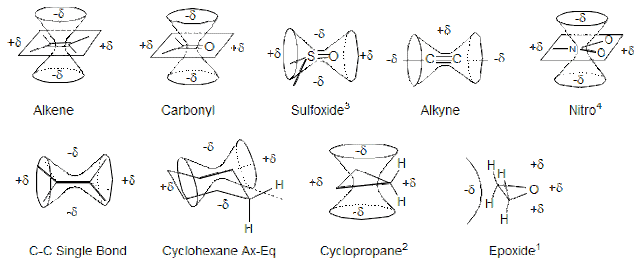NUCLEAR MAGNETIC RESONANCE (NMR)
So lets start from a very basic.
Each atom consists of a nucleus and that is very specific to each atom (no two atoms can have same nuclear arrangement). This nucleus is always in spinning motion like a top.
This motion of nucleus generate magnetic field because nucleus(contains proton) possesses electric charge and each moving charged species generate the magnetic field .
Difference between spinning and precessional motion:-
Spinning Precession

ΔE x Δt ≃ ħ/2π
hΔⅴ х Δt ≃ h/4π
Δt ∝ 1/Δv
means if relaxation time increases the frequency difference increases , which causes the peak to broadened.This is the reason why non viscous solution shows sharp peaks. Because due to random orientations in non viscous solution restricts the spin-lattice relaxation which increases the relaxation time and decrease in Δv hence peaks are sharp.
Each atom consists of a nucleus and that is very specific to each atom (no two atoms can have same nuclear arrangement). This nucleus is always in spinning motion like a top.
This motion of nucleus generate magnetic field because nucleus(contains proton) possesses electric charge and each moving charged species generate the magnetic field .
Difference between spinning and precessional motion:-
Spinning Precession

- Simple nucleus is always spinning on its axis.
- But when this nucleus comes under the external magnetic field, it shows precessional motion as with spinning .

this is spinning as well as precessing - This external magnetic field causes the nucleus to adopt two orientations (like bar magnet oriented with earth's magnetic field)one is higher in energy(opposed) and other is in lower one(aligned).
- And this is only external magnetic field which cause the precessional motion of nucleus otherwise the nucleus is spinning alone.
- The frequency at which the nucleus is precessing is called its precessional frequency.
- The change in external magnetic field cause a change in precessional frequency only, left spinning motion undisturbed.
γ = magneticgyro ratio
B = external magnetic field strength
- The above equation tells that precessional frequency is directly proportional to external magnetic field. On increasing the external magnetic field precessional frequency increases.
| Data table for the values of precessional frequency of 1H nucleus with external magnetic field | ||||||||
| magnetic field strength(tesla) | 1.4 | 1.9 | 2.3 | 4.7 | 7.1 | 11.7 | 14.1 | |
| frequency(MHz) | 60 | 80 | 100 | 200 | 300 | 500 | 600 | |
Now remember that radiofrequency (radiowaves) only resonates with the precessional frequency of the nucleus.
How NMR works ?
- Precessing nucleus in external magnetic when irradiated with radiowaves , the frequency of radiowaves resonate with the precessional frequency of nucleus and nucleus in lower energy(aligned orientation) is moved to high energy state(opposed orientation). This absorption of energy is recorded as NMR spectrum.
Some important points:-
- Only those nuclei are NMR active (means show NMR phenomena) which have either mass number or atomic number is odd . Or have Spin Quantum Number (I) is greater than 0.
- Higher is the external magnetic field strength better is the NMR result.
- NMR tells about the skeleton of the molecule.
Some terminologies:-
- SENSITIVITY OF SIGNAL:- Sensitivity of signals depends upon the magnetic moment of nuclei , higher the magnetic moment most sensitive the signal. This is the reason why free radicals can be detected in a very very low concentrations because electron's magnetic moment is very high.
- SATURATION OF SIGNAL:- When population of protons is same in both low and high energy state this condition is called saturation of signal .This happened when the energy difference between two states is very low. In this case no absorption of energy will occur , however still absorption occurs because protons come back to lower energy state simultaneously with transition to higher energy state.
- SPIN-SPIN RELAXATION:- In this the energy released during the movement of protons from higher energy to lower energy, is transferred to neighboring protons and so on.
- SPIN LATTICE RELAXATION:- In this energy is transferred to the surrounding of the molecule(e.g., solution) condition is that that surrounding must be electromagnetic in nature and in appropriate orientation with the nucleus.
- RELAXATION TIME:- This is the lifetime of excited nucleus. This time also responsible for the sharpness and broadness of peaks.according to uncertainity principle-
hΔⅴ х Δt ≃ h/4π
Δt ∝ 1/Δv
means if relaxation time increases the frequency difference increases , which causes the peak to broadened.This is the reason why non viscous solution shows sharp peaks. Because due to random orientations in non viscous solution restricts the spin-lattice relaxation which increases the relaxation time and decrease in Δv hence peaks are sharp.






Comments
Post a Comment